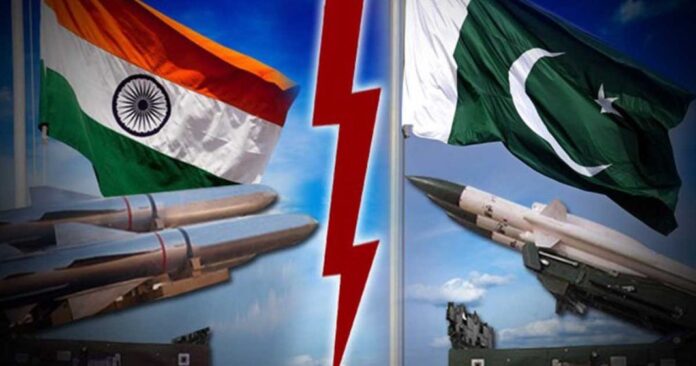
By Komal Khan 26 September 2022
Great power competition is driving the revival of ambitious revisionist regionalism in international politics. To meet the above purpose, India has been pouring its economic surplus in its defense and advanced weaponry purchase. This disproportionate advantage has incorporated offensive military tactics such as surgical strikes, as manifested during the Balakot attack and Brahmos launch, in the evolving strategic culture of India towards Pakistan, thereby causing strategic instability. Pakistan seeks to achieve strategic stability in a state of the disadvantage of conventional asymmetry by utilizing workable deterrence under the ‘first strike’ policy in order to restore the balance of power in South Asia against a potentially stronger adversary India with economic and conventional defense leverage. This ongoing review in Indian nuclear doctrines responded with an offensive-defensive approach in Pakistan’s strategic culture is a challenge to strategic stability in South Asia.
India’s policy of ‘neighbours, not friends, but persistent enemies’ influences India’s offensive foreign policy towards Pakistan and is a destabilizing factor for the strategic stability in South Asia. Witnessing that, the Doval doctrine outlines offensive strategy via covert operations; however, in the name of self-defense; as core to India’s foreign policy towards Pakistan.
India regards diplomacy as a subtle war and stresses offensive war in denial of the international law, rather than no war policy, for the security of national interest. The relevance of war to Indian diplomacy has been openly admitted by the former Indian ambassador Pinak Ranjan Chakravarty in the official text of his distinguished lecture to the Ministry of external affairs, the government of India. India’s support to the separatists in Pakistan’s Western territory signifies its hidden warfare against Pakistan. India’s (Mandala’s s) secret service and espionage strategy as mainstream Indian foreign policy has been recognized internationally in the Jadhav (India v. Pakistan) case being pursued in ICJ.
Impact of Hindu Rashtra on Strategic Stability in South Asia
Hindu Rashtra is the essential driver of Indian strategic culture that determines the state of strategic stability in South Asia. India’s ambition of regional domination is being pursued by India’s advanced military and defense procurement in relations to India’s adversary. It is also the factor that determines Pakistan’s counter-response to restore the strategic deterrence in the region as a viable conflict management mechanism against India.
To pursue the interests of regional domination and leadership in South Asia and the Indian Ocean region, India’s foreign policy is framed under the set guidelines of Realism which count warfare and aggression as central India’s practice of international relations, particularly towards Pakistan in the regional context. Intelligence, diplomacy, and military affairs are focused on setting up the strategic patterns of Indian decision-making.
Hybrid warfare remains part of Indian strategic culture and its foreign policy to tilt balance in India’s favour by destabilizing the adversary. The confession of it has been made by India on occassions of Modi’s Dhaka Visit in 2015 where he admitted India’s military support to the “Mukti Bahini” in the war of 1971 and also his Independence Day speech August 2016 where he confessed to India’s active support to the Baloch Liberation Movement in Pakistan. Kalbushan’s case is also on the record of the ICJ.
The impact of great power competition on strategic stability in South Asia
India’s recognition by the US and the West as a net security provider in the Indo-Pacific affairs necessitates for Pakistan to incorporate cross-domain deterrence to prevent Indian aggression amid its transforming offensive behaviour against Pakistan. The China-India geo-strategic competition for regional leadership in South Asia leads to a challenge of a two-front war which is recognized as ‘India’s China-Pakistan Dilemma‘ at the regional fronts. Stimson study conducted on this issue argues that India’s security dilemma related to the China-Pakistan strategic partnership exposes it to a military threat on two fronts. To counterbalance India with technological edge, a military escalation by India increases the possibility of a cooperative military response from Pakistan in bandwagoning with China.
The intense strategic competition between the USA and China has led to a balancing coalition between the US and India, characterized by Indo-US defense cooperation in the form of the four foundational agreements; the NSG waiver that has led to a significant vertical proliferation in India’s nuclear weapons program; and the US-sponsored India’s membership in MTCR that has boosted India’s missile program. These are likely to raise India’s counterforce temptations, thereby risking first strike stability between Pakistan and India.
Pakistan’s counter-response to restore the strategic deterrence in the region as a viable crisis management mechanism against India does have an impact on strategic stability in South Asia. For example, the Balakot strike was responded by Pakistan in the form of a limited warfare whereby two Indian fighter aircrafts were downed by Pakistan. The event had an escalation potential which was dealt responsibly particularly by Pakistan in the form of a defensive military response and with the return of the IAF pilot captured during the operation. Moreover, advancement and pursuit of tactical and strategic weapons to balance India in an arms race are inevitable conflict management tools that Pakistan is compelled to employ to ensure deterrence stability in South Asia. However, in the long term, it may also be perceived as challenge to strategic stability in South Asia.
Strategic stability in contemporary South Asia is tenuous because under no dialogue, with no risk reduction and restraint mechanisms, there has been a constant threat of militarily aiming strategic targets and surgical strikes that may be misunderstood as pre-emptive strikes causing nuclear escalations and deterrence instability in South Asia.
The writer is working as a Research Officer at the Strategic Vision Institute (SVI), a non-partisan think-tank based out of Islamabad, Pakistan.

